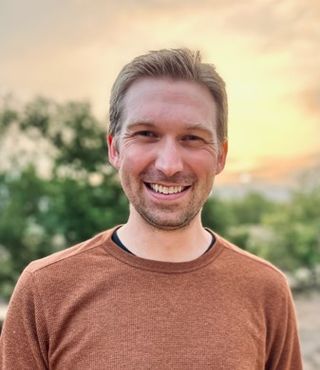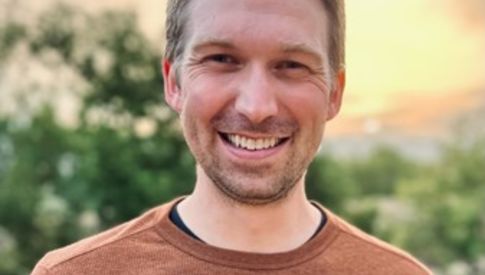We’re Stronger Together
With your help, we can make ambitious innovations in clinical care and education for our community.
The goal of our training program is to provide a comprehensive educational experience that will ensure residents have a strong foundation in the knowledge base, diagnostic and interpretive skills, and clinical interface skills required to be an effective, independent Anatomic and Clinical Pathologist. While the Loma Linda University Medical Center and Loma Linda University Children’s Hospital are the chief training facilities for our 4-year, combined AP/CP program, residents also rotate at the Loma Linda Veteran’s Administration Hospital, providing an additional training and practice environment and model. In addition, rotations at the Loma Linda Faculty Medical Clinic (FMC) provide greater exposure to outpatient biopsy and surgical material. The training is provided in the setting of a Christian institution and a health sciences university, which serves a diverse population, including many underserved communities.
Extensive grossing support & instruction by Pathologists’ Assistant Program (only PA school in western U.S.)
Daily protected didactic conference at 8 AM
$2500 annual book & travel fund + PathPrimer subscription
$1,000 to attend a pathology board review course
Time off for presenting at meetings in addition to vacation
LLU Pathology is the home of the California Tissue Tumor Registry (CTTR), with easy access to years of CTTR study slide sets, and free admission to the biannual CTTR Conference
This four-week rotation repeats during the four years of residency training, allowing residents to progressively develop and maintain their skills with graduated responsibility. Our caseload is broad and includes both common surgical specimens and challenging disorders and tumors, supplied by an active LLUH Transplantation Institute and Cancer Center.
The rotation includes a rotating 4-day schedule beginning with a full day of grossing diverse cases with varying complexity with ample PA support in the gross room. Grossing day is followed by an entire day of protected preview time to independently generate complete reports and triage ancillary testing, with oversight and advice provided as needed. The next day in the cycle includes signout day allowing residents to double scope with attendings to discuss their rendered diagnosis and follow up with any ancillary testing. The last day of the cycle includes a dedicated frozen day, giving residents real time exposure to intraoperative consultations.
Grossing instruction and support is ample, aided by working alongside instructors and students in LLUH’s Pathologist Assistants’ program, the only PA school in the western United States.
The adult and pediatric autopsy pathology service provides an opportunity for residents to study and correlate morphologic abnormalities with clinical manifestations of disease, and participate in the important educational and quality assurance functions of the hospital autopsy. Residents also gain autopsy experience at the nearby Jerry L. Pettis Memorial Veterans Medical Center (VA), and forensic experience during a 2-week rotation at the San Bernardino County Medical Examiner’s Office. Residents have no issues achieving the 30 required autopsies in order to take the ABP Board exam.
This recently revised 4-week rotation incorporates daily sign-out of exfoliative and fine needle aspirate cytopathology specimens in both the inpatient and outpatient setting. The residents review cytology slides, prepare the reports to completion, and triage appropriate immunohistochemical studies. An integrated rapid on-site evaluation (ROSE) service provides opportunity to gain expertise in this rapidly growing discipline, helping to ensure specimen adequacy and appropriate triage for ancillary studies, thereby reducing the necessity for repeat procedures. Exposure to gynecologic and non-gynecologic cytopathology is provided, as well as training in the performance and interpretation of superficial fine needle aspiration biopsies.
This recurring 4 week rotation provides abundant experience in the diagnosis of bone marrow, lymph node, and peripheral smear analysis. Residents are trained in the interpretation of histologic, immunohistochemical, flow cytometric, cytogenetic, and molecular diagnosis of a wide range of adult and pediatric leukemias, lymphomas, and non-neoplastic hematologic disorders. One of the rotations provides dedicated focus on the interpretation of flow cytometry. Training in performing bone marrow biopsies is also provided.
The blood bank portion of this rotation focuses on the management of a hospital-based transfusion service, including practical aspects of transfusion medicine, and the management of common transfusion-associated problems. An available rotation at Lifestream, the blood donation center that services the Inland Empire and surrounding area, is available, with teaching by the Blood Bank Guy, Joe Chaffin. Joe Chaffin also provides occasional morning didactic conferences for the residency program.
Dedicated subspecialty clinical pathology rotations are also built into the curriculum, outlined below. Residents are supervised by the clinical pathologists or technical specialists in charge of the various laboratory sections. Experience in laboratory quality assurance, test validation, and continuous quality improvement processes is provided.
Residents rotate at the VA Medical Center in Loma Linda for ten 4-week rotations. Anatomic pathology responsibilities include handling surgical pathology specimens, performing autopsies, and presenting at multidisciplinary oncology tumor boards. This rotation also provides the opportunity to serve a different patient population, adding exposure to a greater diversity of surgical specimens.


Whether it's leading our regularly scheduled frozen section slide conference, or signing out a stack of previewed cases with a resident, it's a blast to work alongside and see the tremendous growth in our awesome resident team. LLU is also a great place to raise a family, make lasting friendships, and hit the local trails on the weekends.
With your help, we can make ambitious innovations in clinical care and education for our community.